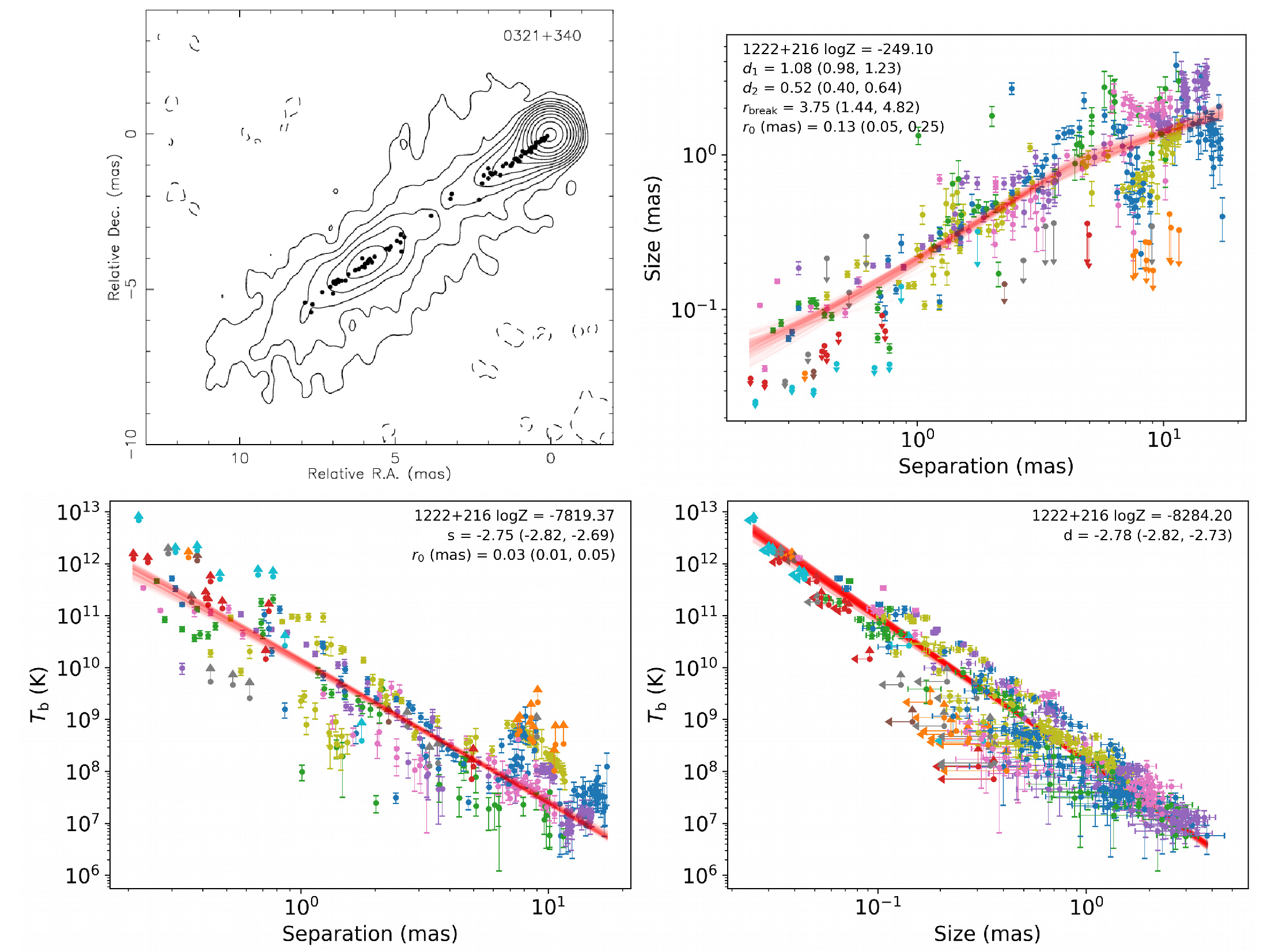Daily Image
07-10-2021Colloquium: The zoo of brightness temperature distribution in parsec-scale AGN jets
| Submitter: | Evgeniya V. Kravchenko (Moscow Institute of Physics and Technology) |
| Description: | The most promising model of AGNs suggests that their radio emission is explained by synchotron radiation from relativistic electrons, which is highly magnified due to relativistic motion close to the line of sight. This yields extreme brightness temperatures at the jet base, which then decrease rapidly downstream the jet. Analysis of individual objects shows significant enhancement of the brightness temperature at the position of jet knots or bends. There is also an indication that jets, showing transition from a parabolic to a conical shape, like in radio galaxy M87, are accompanied by the break in brightness temperature profile. To study the brightness temperature distributions along the AGN jets, we analysed the sample of the brightest AGN jets in the northern sky, that comprises 459 sources observed within the Monitoring Of Jets in Active galactic nuclei with VLBA Experiments (MOJAVE) program at 15 GHz. Using almost 40,000 individual jet component measurements, we analyse variations in their brightness temperature and size to constrain the jet geometry, gradients of a magnetic field strength and particle density along the jet, as well as to locate and study discontinuities in the jet. We find that these distributions exhibit a variety of different behaviours and we show that brightness temperature is an excellent tool to locate, trace and study different inhomogeneities in AGN jets: non-radial motion, helical and bent jets, shocks, recollimation profiles etc. |
| Copyright: | Image credit: Evgeniya V. Kravchenko (Moscow Institute of Physics and Technology) |
| Tweet |  |
